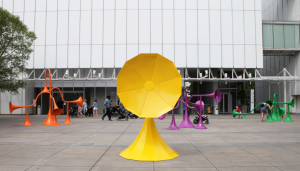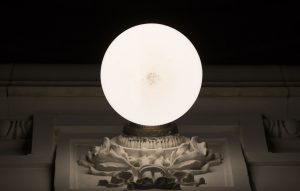sketch
function setup() {
createCanvas(600, 600);
background(182,186,181);
}
function draw() {
//main hair
noStroke()
fill(0)
ellipse(309,269,268,292)
noStroke()
fill(0)
ellipse(349,274,253,267)
//basic face
noStroke()
fill(241,233,186)
ellipse(330,283,223,262)
//ear
noStroke()
fill(241,233,186)
ellipse(432,273,45,81)
//neck
noStroke()
fill(241,233,186)
rect(293,349,68,103)
//body
noStroke()
fill(241,233,186)
rect(232,449,197,150)
noStroke()
fill(241,233,186)
ellipse(232,524,86,151)
noStroke()
fill(241,233,186)
rect(189,524,49,75)
noStroke()
fill(241,233,186)
ellipse(427,524,79,151)
noStroke()
fill(241,233,186)
rect(421,524,45,75)
//under clothes part
noStroke()
fill(0)
rect(234,530,184,69)
//front hair
noStroke()
fill(0,0,0)
ellipse(296,179,160,86)
//mouth shadows
noStroke()
fill(210,203,167)
ellipse(320,384,22,13)
noStroke()
fill(210,203,167)
ellipse(320,352,7,14)
//nose shadow
noStroke()
fill(210,203,167)
ellipse(320,327,22,13)
noStroke()
fill(210,203,167)
ellipse(320,300,7,28)
//eyes shadow
noStroke()
fill(210,203,167)
ellipse(266,271,54,27)
noStroke()
fill(210,203,167)
ellipse(375,271,54,27)
//ear shadow
noStroke()
fill(210,203,167)
ellipse(432,273,7,25)
//arm shadow
noStroke()
fill(210,203,167)
ellipse(419,569,11,61)
noStroke()
fill(210,203,167)
ellipse(232,569,11,61)
//chin shadow
noStroke()
fill(210,203,167)
ellipse(327,412,68,13)
//lips
noStroke()
fill(187,96,141)
ellipse(320,375,29,11)
noStroke()
fill(188,126,151)
ellipse(308,367,29,10)
noStroke()
fill(188,126,151)
ellipse(335,368,29,10)
noStroke()
fill(241,233,186)
ellipse(302,364,29,13)
noStroke()
fill(241,233,186)
ellipse(340,364,29,13)
//eyelashes
noStroke()
fill(0)
ellipse(266,275,52,24)
noStroke()
fill(0)
ellipse(376,275,52,24)
//white part of eyes
noStroke()
fill(255)
ellipse(376,279,52,19)
noStroke()
fill(255)
ellipse(266,279,52,19)
//eyebrows
noStroke()
fill(0)
ellipse(266,243,52,22)
noStroke()
fill(0)
ellipse(376,243,52,22)
noStroke()
fill(241,233,186)
ellipse(266,248,52,19)
noStroke()
fill(241,233,186)
ellipse(376,248,52,19)
//eyeballs
noStroke()
fill(0)
ellipse(266,272,15,15)
noStroke()
fill(0)
ellipse(376,272,15,15)
//mole
noStroke()
fill(0)
ellipse(305,398,5,5)
//clothes
noStroke()
fill(0)
ellipse(327,540,194,118)
noStroke()
fill(0)
rect(258,449,12,60)
noStroke()
fill(0)
rect(384,449,12,60)
}
I started off with making basic shapes and then played with coloring to demonstrate shadows.

![[OLD FALL 2018] 15-104 • Introduction to Computing for Creative Practice](https://courses.ideate.cmu.edu/15-104/f2018/wp-content/uploads/2020/08/stop-banner.png)

 bleewifhoiawehfiowahefiod
bleewifhoiawehfiowahefiod